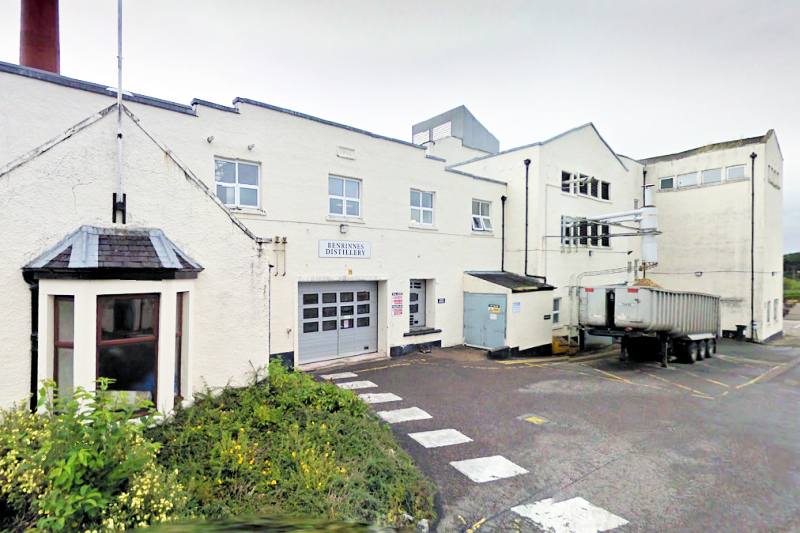Benrinnes
2016-08-27
 Benrinnes in a nutshell:
Benrinnes in a nutshell:founded: 1826
owner: Diageo
region: Speyside
location: 57° 26’ 30” N 03° 14’ 10.5” W
status: active
capacity: 3,500,000 litres
washbacks: 8 Oregon pine
stills: 6
source of water: Curran Burn and Rowantree Burn
tours: no
Benrinnes
The slopes of Ben Rinnes, a mountain between Tamnavoulin and Aberlour, and more precisely the burns flowing down its slopes, provide water to a handful of distilleries. At the foot of Ben Rinnes, you will find Glenfarclas, Aberlour, Allt-a-Bhainne, Glenallachie and finally Benrinnes itself, which owes the mountain not only the water needed for the production process, but also its name. It is worth noting, by the way, that the mountain’s name is spelt Ben Rinnes (just like Ben Nevis, Ben Macdui, Ben Aigan and others), whereas the distillery’s name is one word, Benrinnes.
The distillery was founded in 1826, on the first wave of spirit production legalisation in Scotland, after a new law had been passed three years earlier. However, the plant survived only till the first flood that took place there in 1829, but the ruined buildings were soon replaced by new ones. This time, however, a safer spot had been chosen, a couple of miles away from the original site. In the 19th century Benrinnes changed ownership a few times, and finally got devoured by fire in 1896. Damages were liquidated promptly and the equipment was renovated. Changes in the direct ownership of the plant finished with the takeover by John Dewar’s & Sons in 1922. In time, Dewar’s became a part of the Distillers Company Limited (1925), which eventually evolved into what we now know as Diageo. The last pre-corporate owner of Benrinnes, John Edward, was also the owner of Aultmore, Dallas Dhu and a co-owner of Oban.
1955 brought a modernisation of the still, which did not impact its capacity, however. It was not until 1966 that the number of stills is doubled – it goes from three to six. Until relatively recently, Benrinnes applied a rare production regime comprising of a partially triple distillation – the low wines were divided into two and the half lower in alcohol was redistilled in the middle still, and again halved. The half that was lower in alcohol was again redistilled, whereas the stronger part was sent to the third still for final distillation, together with the stronger half of the first distillation. This regime has been abandoned now, and Benrinnes applies a simple double distillation. The partly triple distillation was in use in the years 1977-2007, which means that Benrinnes 15yo Flora & Fauna was a result of that very technique.
In 1964 the malting floor was replaced by an appliance called a Saladin box, allowing for more effective, quicker and less labour-consuming production of barley malt. That lasted for two decades, for in 1984 the maltings was decommissioned altogether. Since that time Benrinnes has been using barley malt produced in specialised maltings belonging to Diageo.
For many years of its existence, Benrinnes almost exclusively supplied malt for blending purposes, mainly for those blends in the owner’s portfolio. It can be found in such blended whiskies as Johnnie Walker, J&B, as well as Crawford’s 3 Star. In 1991 the first official expression of the malt whisky produced here was launched, namely the Benrinnes 15yo Flora & Fauna. Since then, other official bottlings have been released – including those in the Rare Malts line, Special Releases and Manager’s Choice – as well as numerous expressions from independent bottlers such as Signatory, Gordon & MacPhail, Cadenhead’s and others.
Show more entries from
August 2016